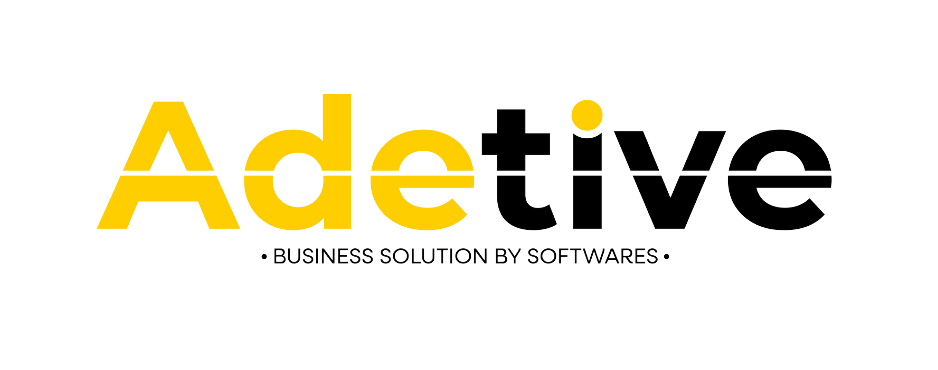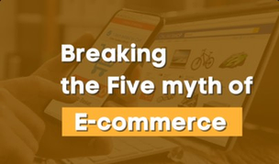
Back
MODERN MARKETING: WHAT IT IS, WHAT IT ISN’T, AND HOW TO DO IT

Modern marketing: What it is, what it isn’t, and how to do it ?
-
Modern marketing is the use of digital and online channels to reach customers, engage them, and build relationships. It encompasses a variety of strategies and tactics, such as content marketing, search engine optimization (SEO), pay-per-click (PPC) advertising, social media marketing, email marketing, and more.
-
Modern marketing isn’t just limited to online channels. It also includes traditional offline methods such as print advertising, radio, television, and direct mail. To do effective modern marketing, you need to have a clear strategy and goals.
-
You also need to understand your target audience and what types of messages and channels will be most effective for reaching them. You should also create a plan that outlines the steps you will take to achieve your goals.
-
This could include creating content, running campaigns, tracking performance, and making adjustments as needed. Finally, you should measure your success and use the results to refine and improve your strategy.
Where to start modern marketing :
-
Establish a Digital Presence: Start by creating a website, blog, and/or social media accounts to begin building an online presence.
-
Craft a Brand Message: Develop a unique brand message and tagline that conveys what your business is all about and how it can help customers.
-
Set Goals and Objectives: Create SMART goals and objectives for your modern marketing efforts that will help you measure success.
-
Know Your Target Audience: Conduct market research to understand the needs, wants, and desires of your target customer.
-
Develop a Content Strategy: Outline a content strategy and create content on a regular basis that is relevant to your target audience.
-
Implement SEO Techniques: Utilize search engine optimization (SEO) techniques to help your content rank higher in search engine results.
-
Leverage Paid Advertising: Use paid advertising, such as Google Ads and social media ads, to reach more potential customers.
-
Analyze and Refine: Track your modern marketing efforts and analyze the results to refine your strategy and optimize your efforts.
To deliver on growth modern marketing requires updated capabilities and enablers :
-
To deliver on growth modern marketing requires organizations to invest in developing the capabilities, technologies, and tools needed to effectively reach and engage their target audiences. This includes the ability to leverage customer data to better understand customer preferences and behaviors, as well as the ability to identify and target new customer segments.
-
Additionally, organizations should invest in digital marketing technologies, such as automated marketing platforms, to streamline campaign management, optimize customer segmentation and targeting, and measure campaign performance. Finally, organizations should ensure that their marketing teams are adequately trained and supported to use these new technologies and tools effectively.
Modern marketing model :
The modern marketing model is a customer-centric approach that focuses on building relationships and creating value for customers. It is based on the following key concepts:
-
Customer Engagement : Engagement is a two-way street. Companies must be willing to listen to their customers’ needs and create solutions to meet those needs.
-
Connected Experiences : Customers expect a seamless experience across all channels. Companies must create a consistent experience across websites, mobile apps, social media, and email.
-
Data-Driven : Marketers must use data to understand customer behavior, identify trends, and personalize the customer experience.
-
Automation : Automation enables marketers to quickly respond to customer needs and create a more efficient marketing process.
-
Content Marketing : Content marketing is the process of creating and sharing valuable content to attract and retain a clearly-defined audience.
-
Personalization : Personalization is the process of customizing marketing messages, offers, and experiences to make them more relevant to customers.
-
Collaboration : Collaboration between teams and departments enables companies to make better decisions and create more effective campaigns.
Modern marketing requires revamped capabilities to meet marketing new rhythms and demands :
-
Modern marketing : requires the development of new capabilities to meet the new rhythms and demands of marketing. These new capabilities include data-driven insights, customer experience management, content marketing, personalization, and agile marketing
-
Data-driven insights : involve collecting, analyzing, and interpreting data to make informed decisions. This data can come from customer surveys, website click-throughs, online reviews, and more.
-
Customer experience : management involves understanding customer needs and developing strategies and tactics to meet those needs. This includes providing timely and helpful customer service, designing quality products and services, and developing loyalty programs.
-
Content marketing : involves creating and sharing content that resonates with customers. This content can include blog posts, videos, podcasts, ebooks, and more.
-
Personalization : involves tailoring marketing messages to individual customers. This can include using customer data to create personalized ads and messages that are more likely to resonate with customers.
-
Agile marketing : involves breaking down marketing projects into short cycles, allowing the team to quickly respond to changes in the market and customer needs. This helps teams remain nimble and better able to adjust their strategies as needed.
Mindsets: Thinking like a modern marketer:
-
Unifier mindset
-
A unifier mindset is a way of thinking that focuses on creating a unified, cohesive experience for customers across all channels.
-
This involves creating a single, unified brand image and message, and ensuring that all customer touchpoints are consistent and in line with the brand’s core values and promises.
-
By using the unifier mindset, marketers can ensure that customers have a consistent and positive experience with their brand regardless of how they interact with it.
Customer-centric mindset:
-
A customer-centric mindset is a way of thinking that puts customers at the center of all decisions and activities.
-
It is focused on understanding customers’ needs and wants, and then creating products, services, and experiences that meet those needs.
-
This approach can help businesses build strong relationships with their customers, increase customer loyalty and drive long-term growth.

The Regular myths around b2b e-commerce have to change. These are the persuading myths around b2b e-commerce.
Return on investment (ROI) mindset:
-
The ROI mindset is a way of looking at decisions from a financial perspective. It involves considering the potential return on investment of a decision, and how that return compares to the cost of the decision.
-
This mindset encourages decision-makers to consider all the financial implications of a decision before committing resources. It also encourages them to think in terms of maximizing their return on investment, which can help them make more profitable and efficient decisions.
Enablers: Operating like a modern marketer:
-
Organizational design and culture: Turning mindsets into behavior Organizational design and culture are two of the most important aspects of company success. Organizational design is the way an organization is structured, including roles, responsibilities, processes, and overall objectives.
-
Culture is the shared values, beliefs, and behaviors of an organization’s employees. Both organizational design and culture are essential for driving performance, motivating employees, and creating a positive work environment.
-
Organizational design and culture can be seen as two sides of the same coin. They both shape how employees think and behave in an organization. A strong organizational design can help to bring the right mindsets and behaviors to the workplace, while a positive culture can ensure those mindsets and behaviors are encouraged.
Agile marketing at scale:
Getting serious about moving beyond pilots Agile marketing is becoming increasingly popular as organizations look to become more competitive and efficient in the digital age. However, many organizations struggle to move beyond agile marketing pilots and into a more sustainable, scalable approach. This article will discuss the challenges of scaling agile marketing, and provide tips for how organizations can effectively scale agile marketing at scale. Specifically, it will explore the need for organizational change, the importance of collaboration, the need for an agile marketing culture, and the need for the right technology and processes.
Organizational Change:
For agile marketing to be successful, it must be embraced at the organizational level. This means embracing a culture of experimentation, collaboration, and continuous improvement. This can be achieved through developing a clear agile marketing strategy, and ensuring that it is communicated and understood throughout the organization. Additionally, it is important to ensure that the organization is properly resourced and staffed to support agile marketing initiatives.
Collaboration:
Agile marketing requires collaboration between departments, teams, and individuals. Collaboration between teams can help ensure that each team is working towards a common goal and that there is no wasted effort or duplication of work. Additionally, collaboration can help teams identify areas of improvement and uncover new ideas and insights.
Talent and agency management: A constant balancing act:
-
Talent and agency management is a delicate balancing act. On one hand, agencies have to ensure that their talent is represented well and is able to maximize their potential. On the other hand, they must also manage their business and financial interests to ensure that their agency is successful. This balance is not always easy to maintain, but it is important in order to ensure that both parties benefit from the relationship.
-
Agencies must ensure that they are providing their talent with the necessary resources and opportunities to help them reach their goals. This includes providing access to industry contacts and training, as well as giving them the freedom to express their own ideas and opinions. Agencies must also be transparent in their dealings, so that talent knows what to expect and how they will be compensated.
-
At the same time, agencies must also be mindful of their own financial interests. They must ensure that they are charging fair rates for their services and that they are not overcharging for their services. They must also be aware of their own overhead costs and make sure that they are not overspending on their talent. This balance between the two parties is essential for a successful relationship.
Data and technology: An obsession for looking ahead:
-
Data and technology are two sides of the same coin that are becoming increasingly intertwined. Businesses are now using data and technology to make decisions and shape their future strategies.
-
As data and technology become more sophisticated and integrated with each other, businesses are able to gain a better understanding of their customer base and the market, allowing them to make more informed decisions.
-
Furthermore, data and technology can help businesses forecast future trends and improve their operations. By leveraging data and technology, businesses can stay ahead of their competitors and remain competitive in the marketplace.








